Delivery delays, production losses, or global recalls—the outcomes of bottlenecks in quality control can rapidly exert extensive impacts on a business. An effective quality assurance program is vital for any organization.
Shortages in skilled labor, employee turnover, or increased absence rates among workers because of illness are among the major hurdles encountered by laboratory or quality assurance managers. This article describes the necessary steps to ensure optimal quality assurance with limited personnel resources.
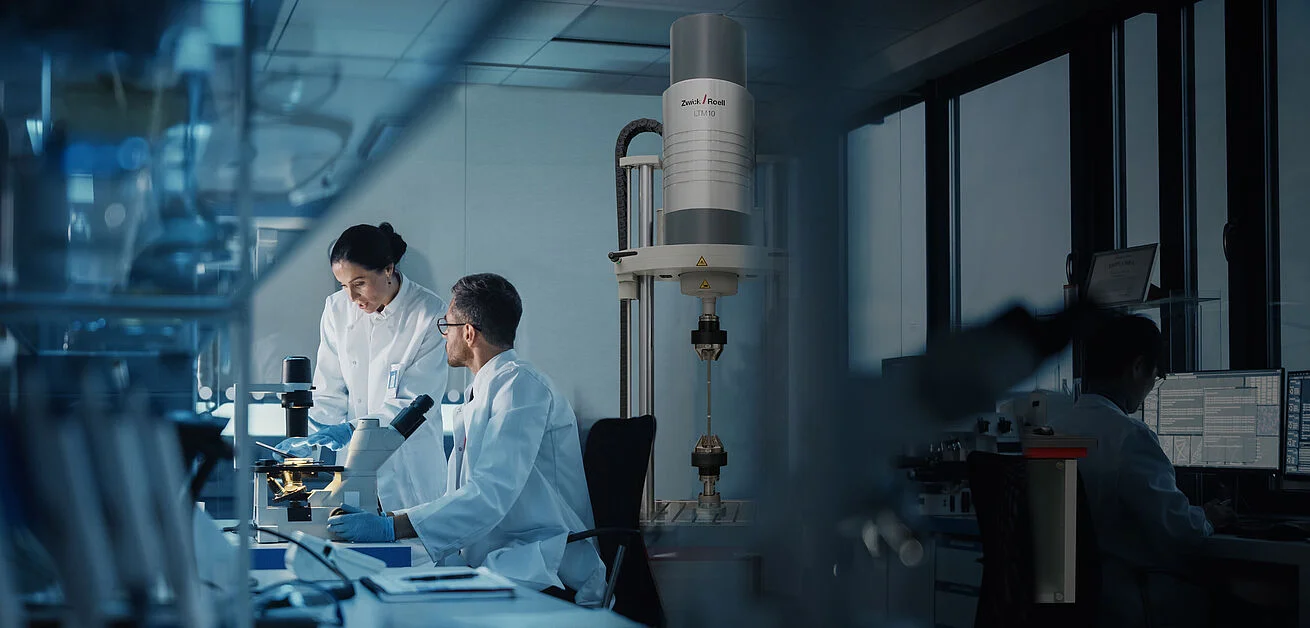
Image Credit: ZwickRoell GmbH Co. KG
Identify Key Positions: Prioritize Personnel Tasks
Depending on the industry or production area, over twenty distinct testing instruments, machines, and systems may be employed for quality assurance objectives.
If pre-testing tasks like specimen preparation necessary for quality control processes are included, the number of machine and device options rises further. For instance, a standard testing laboratory in the plastics processing industry utilizes systems for different testing methods:
- Mechanical testing
- Microscopic analysis
- Spectroscopy
- Thermal analysis
- Rheometric analysis
- Physical analysis
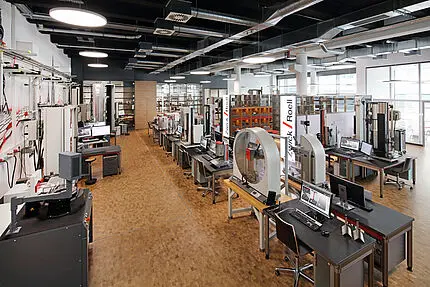
Image Credit: ZwickRoell GmbH Co. KG
Based on the analysis or testing method and manufacturer, different levels of operator training are needed for these instruments. Machine operation can be complex, and a specialist, typically an individual with a high level of experience, must also have the ability to directly evaluate the test results.
In such instances, it could be valuable to explore which machines or instruments can be operated simply, making them accessible to less experienced or new personnel. For instance, the ZwickRoell testXpert testing software ensures easy operation through a sophisticated user management program.
The user is presented with only the relevant operational controls, allowing them to start testing immediately. Through the utilization of pre-established test programs, all essential parameters and test sequences necessary for standard-compliant testing are pre-configured.
The testXpert system configuration ensures consistently similar machine test conditions for tests conducted on a different day or by a different user. This prevents testing under inadequate conditions and entering inaccurate information while minimizing onboarding requirements for new employees.
After an instructional period of approximately 1-2 hours, a new user can be prepared to operate a universal testing machine for a plastics tensile test according to ISO 527 or ASTM D638.
Smart software features and mechanical support tools, like automatically attaching extensometers or insertion aids for specimens, simplify tasks that would otherwise need manual handling on the machine—even for personnel who are new or inexperienced.
In addition, testXpert ensures the ultimate level of safety for both the user and the testing system.
Digitalize Processes: Save Time and Increase Safety
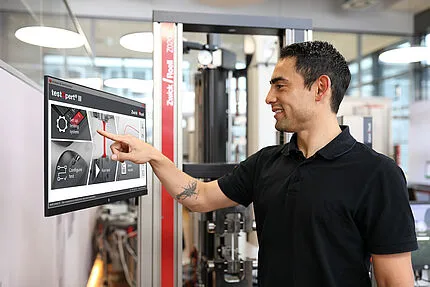
Image Credit: ZwickRoell GmbH Co. KG
Digitalization has gained substantial momentum in recent years, impacting processes in numerous industries.
This extends to the materials testing field, where the adoption of digital technologies has significantly enhanced process efficiencies. Take a look at your current systems. It might be time to take advantage of the many accessible and affordable digital prospects.
- Save time: Through the utilization of digital technologies, testing processes can be automated and expedited. Time-consuming manual tasks are substituted with digital solutions, resulting in reduced test times. For instance, automating the transfer of the specimen dimensions to the testing software (such as through the micrometer screw or cross-section measuring device) can save 50 % of the time typically spent on manually measuring specimens with calipers and entering the information into the system.
- Maximize accuracy: Digitalized testing processes enhance accuracy and precision by removing sources of human error. In the aforementioned example, the scatter of test results caused by inaccurate measurements of specimen dimensions is notably reduced in addition to the time saved in testing.
- Automate data management: With the digital storage of the test results, data becomes easily manageable and evaluable. This simplifies the monitoring and analysis of trends and potential defects or errors. In the realm of big data, the significance of data management in quality assurance will continue to grow. Through the automated export of test results into a quality assurance system via various standard interfaces within testXpert, employees are freed from this responsibility. Apart from saving time and providing real-time data access, this feature removes the need for manual data transfer, which can be an additional source of possible errors.
- Take advantage of pre-configured analysis programs: With the centralized availability of all test results, pre-designed analysis formats can be accessed. There is no longer a need to export data to Excel, merge it manually, and then analyze it. Preset analyses are readily available in testXpert, saving time and reducing errors.
- Improve collaborative decision-making: Digitalization enables access to test results from anywhere, streamlining collaborative efforts and decision-making processes.
Leverage Automation for Repeatable Tasks
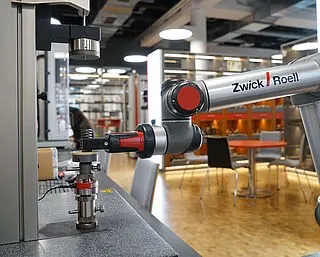
Image Credit: ZwickRoell GmbH Co. KG
In different parts of the world, economically developed countries face limited labor markets, a scenario that is likely to persist in the near future. This includes shortages of personnel in testing laboratories.
Currently, many businesses find themselves in a situation where the regular automation of a broad range of quality assurance processes is and continues to be the primary means of addressing the shortage of qualified laboratory personnel.
Materials testing, with its precisely defined testing standards, presents an optimal business model for automating testing processes. It is important not to overlook the opportunity to turn necessity into a virtue and take benefit from further advantages.
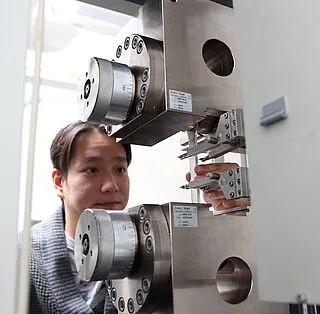
Image Credit: ZwickRoell GmbH Co. KG
- Increase accuracy and avoid errors: Automated systems are less prone to human error and can attain an enhanced level of precision when monitoring processes and results. A notable example is the reduction in the scatter of test results, which, in the case of a fully automated testing system like a universal testing machine with an automated specimen feeding system, is approximately 5 % less in comparison to a similar setup with manual operation. Through automated operations, errors can also be reduced during data entry, processing, and analysis stages, which ensures that decisions are consistently based on accurate and dependable data. For instance, conducting a test on testXpert requires fewer than five mouse clicks or screen touches, eliminating the need for manual data entry.
- Increase efficiency: Automated systems operate more rapidly and efficiently than human testers, expediting processes and boosting productivity. In the case of a tensile test, a semi-automated machine (featuring automated specimen measurement, specimen grip, extensometer, and software functions), takes up to 35 % less time compared to a manually operated machine. This results in savings of nearly 3 hours for operators in an 8-hour workday, allowing scarce or skilled workers to allocate their time to other important tasks.
- Save on costs: A positive byproduct of an automated solution is cost savings by reducing the time and resources required for manual tasks. Automation solutions often carry the perception of high expenses, which is in turn associated with a low return on investment (ROI), causing companies to question their efficiency and the feasibility of making such an investment. Undoubtedly, a fully or partially automated machine is more expensive than its manual counterpart. However, with quickly increasing labor costs or expenses incurred when laboratory services are outsourced, automation often proves to be a quicker ROI than anticipated. For instance, the ROI for 90 % of ZwickRoell’s fully automated systems is less than 24 months. Using an intelligent calculator that considers all factors, ROI can be calculated individually for all test applications and scenarios.
- Monitor processes and analyze data in real-time: Automated systems can monitor processes in real-time, enabling prompt response to discrepancies or abnormalities and the implementation of appropriate corrective action. Simultaneously, extensive data sets can be swiftly and effectively analyzed to identify trends and patterns crucial for quality assurance objectives. Beyond test data, machine data can also be managed and evaluated. To top it all off, ZwickRoell’s Condition Monitoring feature introduces new possibilities for predictive maintenance.

This information has been sourced, reviewed, and adapted from materials provided by ZwickRoell GmbH Co. KG.
For more information on this source, please visit ZwickRoell GmbH Co. KG.